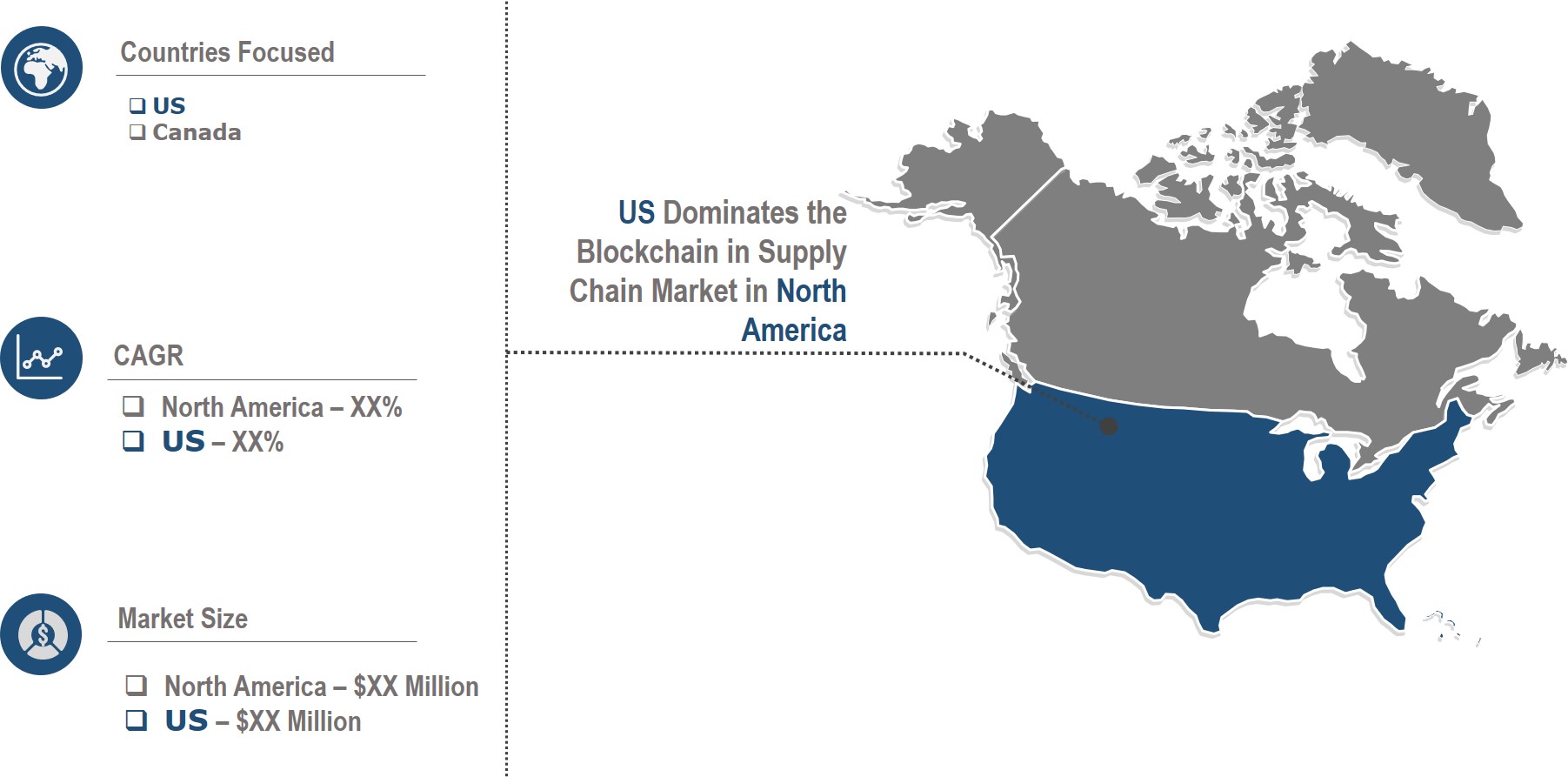
North America Blockchain in Supply Chain Market Forecast 2019–2025
- Domain: ICT - Software & Services,digital technologies
Blockchain is a distributed ledger technology developed on a shared network infrastructure that can permanently record transactions between parties. Increasing focus on enhancing the transparency among both the parties, i.e., suppliers and customers, is driving the demand for blockchain technology in supply chain applications. Blockchain technology enables companies to record the digital footprints throughout the transaction, i.e., the digital footprint of the product’s flow is recorded across each transaction right from supplier to warehouse to client’s store/client. For instance, integrating mobile applications with blockchain technology, facilitating barcode scanning through the camera, and linking the information between the parties across each transaction.
Market Dynamics – North America Blockchain in Supply Chain Market
Increasing focus on enhancing contractual coordination along with the growing emphasis on improving traceability & transparency in supply chain operations is the key factor contributing to the growth of North America blockchain in supply chain market. Increasing focus on tracking digital assets such as licenses, warranties, payment, and receipts in a transparent and unified way is propelling the growth of the North America blockchain in supply chain market.

Increasing investment in creating a digitalized operating environment to improve data integrity, auditability, and to eliminate the manual reconciliation activities/tasks is further accelerating the growth of the North America blockchain in supply chain market. However, lack of awareness and technical expertise are identified as restraints likely to deter the progression of the North America blockchain in supply chain market during the forecast period.
Market Segmentation – North America Blockchain in Supply Chain Market
The North America blockchain in supply chain market is segmented based on provider, application, and vertical. Based on providers, the North America blockchain in supply chain market is segmented into application providers, middleware providers, and infrastructure providers. Based on application, the North America blockchain in supply chain market is segmented into provenance tracking, payment & settlement, smart contracts, inventory management, counterfeit detection, compliance management, and others. By vertical, the North America blockchain in supply chain market is segmented into retail & e-commerce, manufacturing, healthcare & life sciences, logistics, oil & gas, and others.
Country-level Outlook – North America Blockchain in Supply Chain Market
In terms of country-wise analysis, the North America blockchain in supply chain market is segmented into the US and Canada. The US dominates the North America blockchain in supply chain market and is expected to maintain its market dominance throughout the forecast period. This is mainly due to rising inclination towards digital technologies that enable companies to track digital assets in an integrated way in parallel with the physical assets.
Benefits and Vendors – North America Blockchain in Supply Chain Market
The study on the North America blockchain in supply chain market contains an in-depth analysis of vendors, which includes financial health, business units, key business priorities, SWOT, strategies, and views, and competitive landscape. Few of the key players profiled in this study include IBM Corporation, Microsoft, Amazon (AWS), SAP, Oracle, TIBCO Software, BTL Group (Interbit), Peer Ledger Inc., LeewayHertz, and GEP.
The study offers a comprehensive analysis of the “North America blockchain in supply chain market”. Bringing out the complete key insights of the industry, the report aims to provide an insight into the latest trends, current market scenario, and technologies related to the market. In addition, it helps the venture capitalists to understand the revenue opportunities across different segments to take better decisions.
- Executive Summary
- Industry Outlook
- Industry Overview
- Industry Trends
- Market Snapshot
- Total Addressable Market
- Segmented Addressable Market
- PEST Analysis
- Porter’s Five Force Analysis
- Related Markets
- Market Characteristics
- Ecosystem
- Market Trends and Impact
- Value Chain Analysis
- Market Segmentation
- Market Dynamics
- Drivers
- Restraints
- Opportunities
- DRO – Impact Analysis
- Blockchain in Supply Chain Market, By Providers
- Overview
- Application Providers
- Middleware Providers
- Infrastructure Providers
- Blockchain in Supply Chain Market, By Applications
- Overview
- Provenance Tracking
- Payment & Settlement
- Smart Contracts
- Inventory Management
- Counterfeit Detection
- Compliance Management
- Others
- Blockchain in Supply Chain Market, By Vertical
- Overview
- Retail & e-Commerce
- Manufacturing
- Healthcare & Life Sciences
- Logistics
- Oil & Gas
- Others
- Blockchain in Telecom Market, By Country
- Overview
- US
- Canada
- Competitive Landscape
- Competitor Analysis
- Product/Offerings Portfolio Analysis
- Market Developments
- Partnerships and Collaborations
- Product Launches & Exhibitions
- Vendor Profile
- IBM Corporation
- Microsoft
- Amazon (AWS)
- SAP
- Oracle
- TIBCO Software
- BTL Group (Interbit)
- Peer Ledger Inc.
- LeewayHertz
- GEP
- Annexure
- Report Scope
- Market Definition
- Research Methodology
- Data Collation & In-house Estimation
- Market Triangulation
- Forecasting
- Study Declarations
- Report Assumptions
- Abbreviations
Research Framework
Infoholic Research works on a holistic 360° approach in order to deliver high quality, validated and reliable information in our market reports. The Market estimation and forecasting involves following steps:
- Data Collation (Primary & Secondary)
- In-house Estimation (Based on proprietary data bases and Models)
- Market Triangulation
- Forecasting

Market related information is congregated from both primary and secondary sources.
Primary sources
Involved participants from all global stakeholders such as Solution providers, service providers, Industry associations, thought leaders etc. across levels such as CXOs, VPs and managers. Plus, our in-house industry experts having decades of industry experience contribute their consulting and advisory services.
Secondary sources
Include public sources such as regulatory frameworks, government IT spending, government demographic indicators, industry association statistics, and company publications along with paid sources such as Factiva, OneSource, Bloomberg among others.






